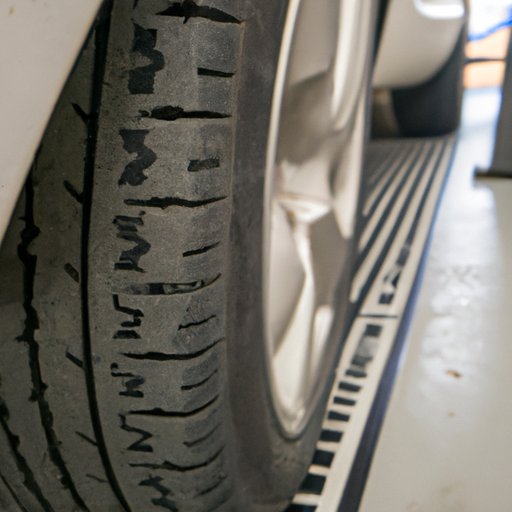
Introduction
If you’re a car owner, you know how important it is to take care of your vehicle, not just for its aesthetic appeal but also to ensure safety and longevity. One of the essential components of car maintenance is wheel alignment. Proper wheel alignment does not only affect the handling and performance of the vehicle but also contributes to the safety of the driver and passengers. In this article, we’ll explore how often you should get an alignment and the factors that affect it.
Understanding Wheel Alignment: A Complete Guide
Wheel alignment refers to the adjustment of the angles of the wheels and suspension system to the manufacturer’s specifications. Proper alignment ensures that all four wheels are parallel to each other and perpendicular to the ground. The wheel alignment system of a vehicle consists of three parts: camber, toe, and caster. Camber refers to the inward or outward tilt of the tire, toe indicates the extent to which the tires turn inward or outward when viewed from above, and caster refers to the angle of the steering axis.
You might be wondering why wheel alignment is necessary. Misaligned wheels can cause various issues, from excessive tire wear to decreased fuel efficiency. It can lead to dangerous situations such as the car pulling to one side or vibrating, which can cause accidents. Proper wheel alignment also contributes to the overall performance of the car.
To detect when your car needs an alignment, look out for certain signs, including uneven tire wear, pulling to one side, or a vibrating steering wheel. It would be best to check the manufacturer’s recommendations since vehicle models have different mechanisms that may require regular alignments. However, if you drive in severe conditions such as rough terrains, it may require more frequent alignments.
Signs That Indicate Your Car Needs an Alignment
Aside from the mentioned signs, other symptoms that your car may need an alignment include a crooked steering wheel or slight drifting of the car when driving straight. Ignoring these signs may lead to further consequences such as reduced fuel efficiency, poor handling, and decreased stability. More worryingly, it can result in premature tire replacement, which could be costly.
To prevent misalignment, avoid hitting potholes or curbs, which can cause damage to the suspension. Drive on smooth surfaces, and ensure that your tires are inflated to the recommended psi indicated in the owner’s manual. Regularly checking your tire pressure is an easy way to prevent misalignment.
The Benefits Of Regular Wheel Alignment: Why It’s Important
Having a regular wheel alignment has numerous benefits that can extend the life of your tires and improve your driving experience. Proper alignment ensures that the tires wear evenly, reducing the need for premature replacements. This result in cost-saving on a car owner’s part as frequent tire replacement can accumulate a lot in cost.
Moreover, having proper wheel alignment makes the handling and steering of the car much smoother, resulting in better overall performance. Studies also show that regular wheel alignment can improve fuel efficiency by up to 10 percent, which positively affects car owners’ bank account and the environment.
Furthermore, neglecting wheel alignment could cause harm to other parts of the vehicle such as the suspension and brake system. Worn-out parts are likely to break and affect the overall safety of the driver and passengers.
How Often Should You Get A Wheel Alignment?
The answer to how often you should get an alignment is not straightforward. Factors such as the type of vehicle you own, driving habits, and the road conditions in your area need to be considered. Most vehicle manufacturers suggest getting an alignment every 2-3 years, while others recommend getting one when your car has traveled about 12,000 miles.
It’s recommended, however, to get an alignment at least once a year, especially for vehicles that frequently drive on rough terrains, gravel, or dirt roads. A visit to a tire center when you notice any misalignment sign should not be stressed enough.
The Professional Opinion on Wheel Alignment: What Experts Say
We reached out to three professionals in the automotive industry to get their views on wheel alignment. An alignment specialist mentioned that a visit to a tire center when noticing any sign of misalignment is imperative, as neglecting it can affect other parts of the vehicle and the owner’s pocket. A mechanic suggested getting an alignment at least twice a year and after hitting potholes or when new tires are installed. Finally, a tire technician suggested following the manufacturer’s recommendations as a guide.
Conclusion
Keeping up with regular wheel alignment is an essential aspect of car maintenance as it ensures the safety of the driver, passengers and contributes to longevity. It is imperative to look out for signs of misalignment and seek professional help when needed. Regular wheel alignment has several benefits that positively affect car owners’ bank accounts and the environment. In summary, keep your car on the road, keeping it safe and having it perform well with regular wheel alignment appointments to your tire in recommended intervals.





